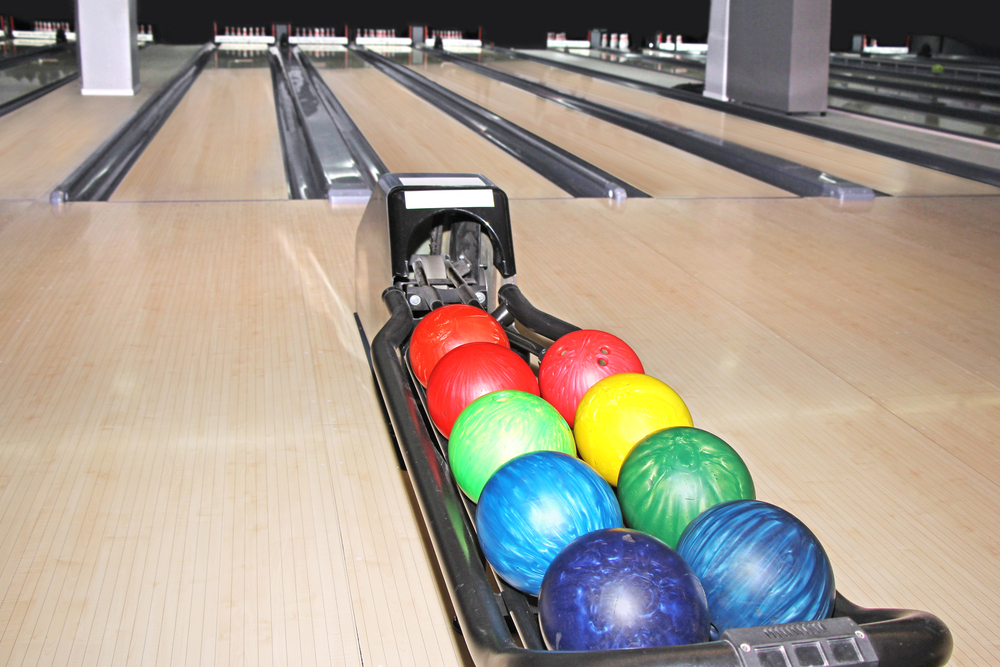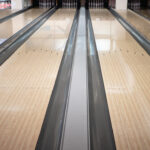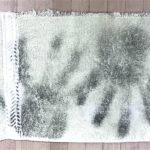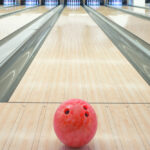
If you've ever bowled, you know that it can be a lot of fun. But have you ever wondered why the bowling lane seems so slippery? It turns out that there are several factors that make bowling lanes slippery, and today we're going to take a closer look at what they are.
So if you're planning on hitting the lanes soon, read on for some real reasons!
Contents
- 1 What Makes Bowling Lanes Slippery?
- 2 Why Do They Put Oil on Bowling Lanes?
- 3 What Oil Is Used on Bowling Lanes?
- 4 What Oil Pattern Do Most Bowling Alleys Use?
- 5 Lane Oil’s Effect on Bowling Balls
- 6 How Often Should Bowling Lanes Be Oiled?
- 7 Professional Bowling Lane Oil Patterns
- 8 Where on the Lane Is the Least Amount of Oil?
- 9 Is a Bowling Lane Waxed?
- 10 Related Articles
What Makes Bowling Lanes Slippery?
What makes bowling lanes slippery are the layers of conditioner (oil-based lubricate) applied to the lanes. Also, most lanes are made from synthetic materials, which are extremely smooth and slippery.
Why Do They Put Oil on Bowling Lanes?
Now that we've answered the what let us answer the why. Why do they put oil on the bowling lanes? It's to protect and maintains the lanes, helps the ball, creates lane difficulty, and affects the ball's performance.
It may seem counterintuitive to make a surface more slippery. But, the oil actually serves several purposes.
1. Protects the Bowling Lane
The oil creates a barrier between the lane and the bowling ball, and this helps to preserve it. Without oil, the lane would be more likely to suffer from wear and tear.
2. Easy Maintenance
When a lane is properly oiled, it is much easier to clean and care for. With oil on the lane, dirt, and debris are less likely to stick to the surface. This helps to keep the lane looking clean and polished.
3. Helps the Ball Roll
Oil on the lanes allows the ball to roll more evenly and predictably. It can also make the game more enjoyable, as it is easier to predict how the ball will behave, making it not to veer off to one side.
4. Gives a Harder Hook to a Bowling Ball
Another reason why oil is applied to bowling lanes is that it can give a harder hook to a bowling ball.
5. Helps Provide Different Levels of Difficulty
Different oil patterns can be used to make the game more challenging for experienced bowlers or easier for beginners. This helps to keep the game interesting and fun for everyone.

What Oil Is Used on Bowling Lanes?
The type of oil used can vary depending on the bowling alley, but the most common oil is mineral oil. This oil is applied to the lane in very thin layers and needs to be reapplied regularly to maintain its effectiveness. While mineral oil is the most common type of oil used on bowling lanes, some alleys use synthetic oils, which can last longer and require less frequent reapplication.
However, these oils can be more expensive and may not provide as much traction for the ball, making them less ideal for competitive bowlers. No matter what type of oil is used, it is important that it is applied evenly across the entire lane for optimal results.
What Oil Pattern Do Most Bowling Alleys Use?
Most bowling alleys use a standard house pattern, but there are also other common patterns that you might encounter. Different oil patterns can make the game more difficult or easier, and they can also affect the way the ball hooks. The House pattern is designed to be easy for bowlers.
It is more forgiving (designed to help keep the ball on the lane) and provides a consistent playing surface. It has more oil in the middle of the lane and less oil on the outside edges to help create an even playing field and prevent gutter balls.
Lane Oil’s Effect on Bowling Balls
Oil not only affects the speed of the ball but also its' hooking potential and overall performance. The right amount of lane oil can help your ball to hook more, which can be an advantage if you know how to use it correctly. Too much lane oil, however, can actually make your ball slide more and lose some of its hook potentials.
Lane oil can also affect the speed of your ball. If there's too much lane oil on the lanes, your ball will slow down as it pushes through all of the oil. This can be a disadvantage if you're trying to bowl a fast game.
How Often Should Bowling Lanes Be Oiled?
Most bowling alleys oil their lanes at least once a day, and sometimes more depending on how busy they are, in order to keep them in good condition. How often the lanes need to be oiled will depend on how often they are used. If the lanes are used frequently, then they will need to be oiled more often. Lanes that are used less often can be oiled less frequently.
Professional Bowling Lane Oil Patterns
Some bowling alleys use what is known as a tournament pattern for professional bowlers. This oil pattern is designed to be more challenging, and it is often used in competitive bowling tournaments using oil patterns approved by the professional bowling association.
Other oil patterns are:
- The Scorpion Pattern: The Scorpion pattern is 42 feet long. This style has a lot of oil further down the lane.
- Cheetah Pattern: Being the shortest of all these patterns, it covers 36 feet of the lane.
- The Viper Pattern: This oil pattern covers up to 38 feet of the bowling lane.
- Chameleon Pattern: This pattern is 40 feet long, and the oil pattern is placed in strips.
- The Shark Pattern: Usually 44 feet long. The pattern’s length and shape ensure that the player bowls closer to the middle of the lane.
Where on the Lane Is the Least Amount of Oil?
The outside of the lane, the far right and far left, are typically the areas with the least amount of oil. This is because the oil is meant to create a slick surface in the center of the lane, and the outside of the lane is usually not as slick.
This means that if you are trying to hook the ball, you will aim for your target arrow and stay right between where there is oil and where there is no oil (the buffer zone).
Is a Bowling Lane Waxed?
In addition to oil, some bowling lanes are also waxed. The purpose of the wax is to create a smooth surface for the ball to roll on. Wax can also help to protect the lane from dirt and debris.
Most bowling alleys do not wax their lanes, but some may use a light coat of wax to keep the lanes in good condition. If you are bowling on a lane that has been waxed, you may notice that the ball slides more than it would on an oiled lane.
How Do I Know if My Bowling Lane Is Oily or Dry?

One way is to look at the lane and see if there are any shiny spots.
These shiny spots will be oil that has been left behind by the ball. If you see a lot of these shiny spots, it is likely that the lane is oily.
How Do Bowling Alleys Oil Their Lanes?

Bowling alleys typically use a machine to apply the oil to the lanes.
The machine will dispense a small amount of oil onto the lane, and then a roller will spread the oil evenly across the surface. Some bowling alleys may also hand-oil their lanes. This is more common in smaller bowling alleys or in bowling alleys that do not have a lot of traffic.
Are Synthetic Bowling Lanes Oiled?

Yes, synthetic bowling lanes are typically oiled in the same way that regular lanes are oiled.
The oil helps to create a smooth surface for the ball to roll on and also prevents the lane from drying out.
Related Articles
Now that you know what makes bowling lanes slippery, you can be sure to oil your lane properly and choose the right oil pattern for your game. You will also know where the oil is usually located on the lane and how to adjust your aim accordingly. Knowing all of this information will help you to improve your bowling game and have more fun while you are playing.
Kira Byrd, a Certified Fraud Examiner, holds a B.S. in Accounting from the University of Alabama at Birmingham. With a passion for bowling from her childhood, Kira has poured her expertise and personal experiences into creating and nurturing Bowling For Beginners. Kira's mission is to meet new bowlers where they are and guide them toward consistently achieving higher scores. With a focus on skill development and strategic techniques, she empowers readers to take control of their game and unlock their true potential.
Bowling For Beginners embodies strict editorial integrity, ensuring reliable and unbiased information. Kira's commitment to delivering valuable insights and practical strategies is reflected in every article. Here's an explanation of our editorial policy and how we get money.





